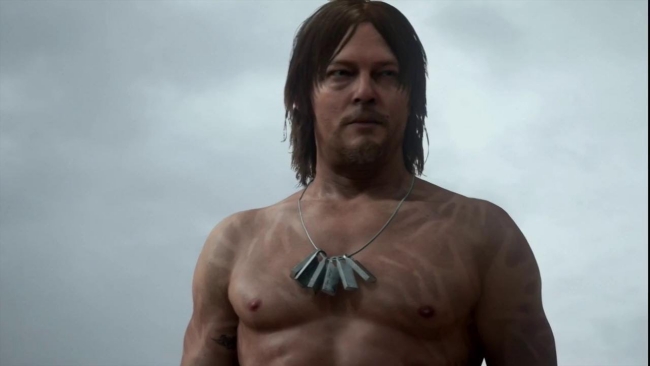In recent months, Kojima has been more forthcoming with details about Death Stranding’s gameplay systems. Earlier this year, for instance, he teased that the title wouldn’t feature a typical game over state. In addition, during Tokyo Game Show 2019, the Creative Director explained how the “Like” system will function. Now, even more details about both have surfaced, particularly regarding Death Stranding’s non-traditional game over phase, which we’ve apparently already seen all the way back in the game’s first trailer.
Kojima recently spoke with Japanse publication Famitsu, offering a few more details about some of the game’s systems. Redditor damnlee translated the interview’s most salient points. With regards to the game over state, Kojima had this to say,
There is no gameover in this game. Traditional game will reset the time to “before you die.” In DS, we don’t do that. If Sam dies, his soul will be drown in “ocean space” (結び目 ). Sam has to look for his body to come back to life. The first trailer is where Sam die and the soul stranding in other side.
This quote suggests that the beach scene in Death Stranding’s original teaser is actually representative of what happens when Sam perishes. It makes sense, and could explain why no such scene has been shown since then.
During the Famitsu interview, Kojima also addressed how leaving a Like works. It won’t necessarily be optional, he explained. Rather, the game itself will automatically issue the positive message when one players makes use of another player’s creation.
If you used something that was created by other player, the system will automatically give a like. After using it, you can manually given another like. In total you can give two likes to a building/infrastructure. Kojima said people who [are] testing the game have different opinions. American game tester said they don’t like [how] the system gives out likes without their consent. Japanese game testers are fine with it. (Yes, there are people already playing/testing the game!)
On the topic of giving Likes to buildings and infrastructures, Koijma noted that some structures come about after a player triggers a “void out.”
If you trigger a void out (eaten by the monster or by Homo Demons), the map will create a crater. All building and infrastructure will be gone. But the crater will only exist in your world. As time goes by, the rain fall will recover the crater and you will see others players buildings and infrastructures again.
How exactly this building mechanic works remains under wraps. With Death Stranding’s release so close, such details will likely remain a secret until launch.
Death Stranding will hit store shelves next month on November 8th for the PlayStation 4.








